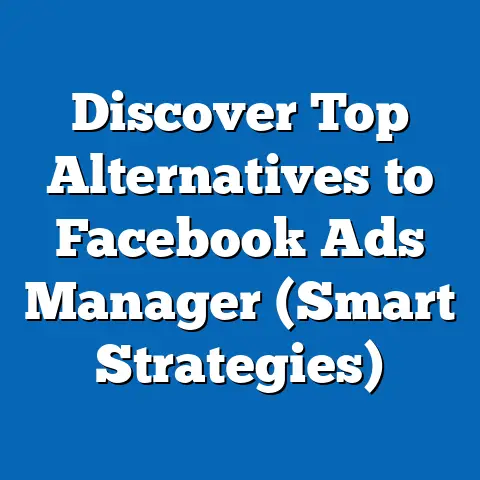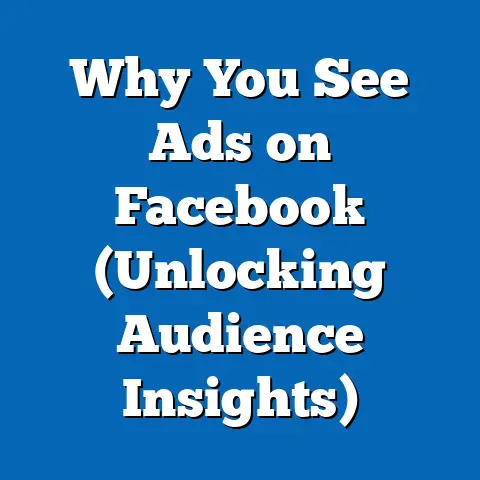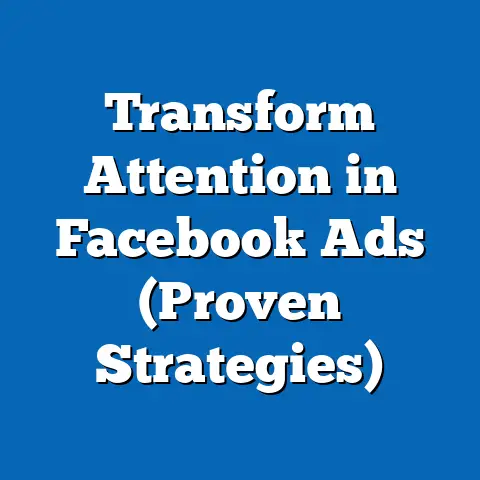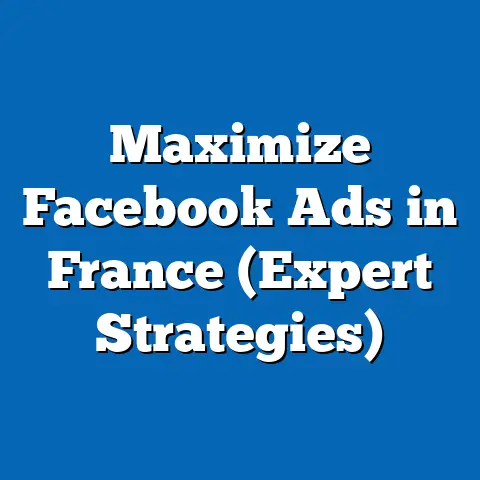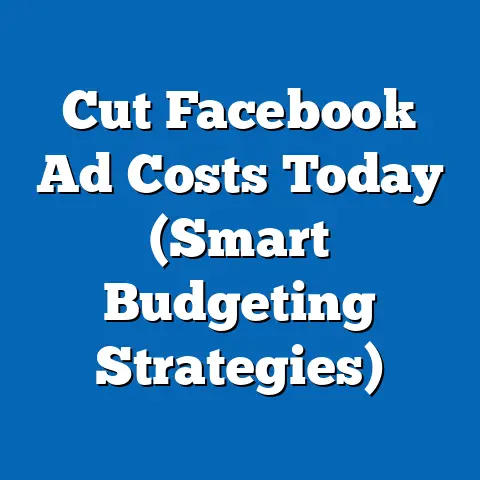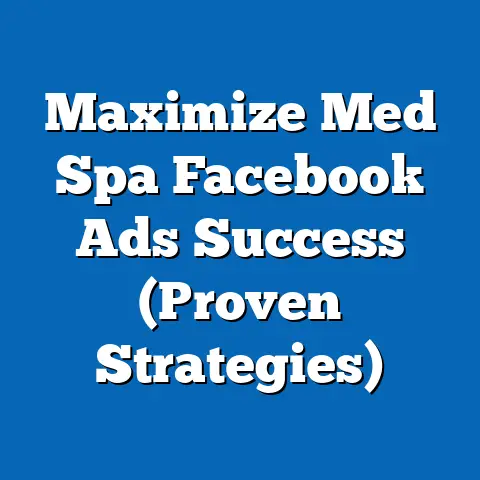Unlock Facebook Lead Ad Forms (Pro Tips Inside)
In the fast-paced world of digital marketing, businesses often struggle to capture high-quality leads without breaking the bank or investing excessive time. Enter Facebook Lead Ad Forms—a quick, efficient solution designed to streamline lead generation directly within the platform. By allowing users to submit their information without leaving Facebook, these forms reduce friction and boost conversion rates, making them a game-changer for marketers.
Facebook Lead Ads, introduced in 2015, emerged as a response to the growing need for mobile-friendly, user-centric advertising tools. They are defined by their seamless integration with the platform, pre-filled form fields using user data, and customizable options to target specific demographics. Historically, they reflect the broader shift toward mobile-first marketing strategies and the increasing demand for instant, low-effort interactions in the digital space.
The societal implications of this tool are significant, as it reshapes how businesses connect with consumers, prioritizing speed and personalization. It also raises questions about data privacy and user consent in an era of heightened scrutiny over tech platforms. This article dives deep into the mechanics of Facebook Lead Ad Forms, offering pro tips for optimization, exploring their evolution, and analyzing their broader impact on marketing and society.
What Are Facebook Lead Ad Forms? Key Characteristics and Functionality
Facebook Lead Ad Forms are a specialized ad format designed to collect user information directly within the platform, eliminating the need for external landing pages. Unlike traditional ads that redirect users to a website, Lead Ads present a form that users can fill out with just a few clicks, often pre-populated with data from their Facebook profiles (like name and email). This reduces barriers to entry, especially on mobile devices where navigating external sites can be cumbersome.
These forms are highly customizable, allowing businesses to ask specific questions tailored to their needs—whether it’s gathering contact details, gauging interest in a product, or qualifying leads for a service. They are typically paired with compelling visuals or videos and a clear call-to-action (CTA) like “Sign Up” or “Learn More.” Integration with Customer Relationship Management (CRM) tools like Mailchimp or HubSpot further enhances their utility by automating lead management.
A standout feature is their mobile optimization, reflecting the fact that over 90% of Facebook’s active users access the platform via mobile devices (Statista, 2023). Lead Ads cater to this audience by ensuring a smooth, in-app experience, which studies show can increase conversion rates by up to 20% compared to traditional web forms (Facebook Business, 2022). This functionality positions Lead Ads as a vital tool for businesses aiming to capture leads efficiently in a mobile-first world.
Historical Context: The Evolution of Digital Lead Generation
To fully appreciate Facebook Lead Ad Forms, it’s essential to understand the historical context of digital advertising and lead generation. In the early 2000s, online marketing relied heavily on banner ads and email campaigns, often directing users to static websites with lengthy forms. These methods, while innovative at the time, suffered from high drop-off rates due to slow load times and user frustration.
The rise of social media in the late 2000s, particularly Facebook’s explosive growth to over 1 billion users by 2012, shifted the landscape. Marketers began leveraging social platforms for targeted advertising, capitalizing on rich user data to reach specific audiences. However, early social ads still required users to navigate away from the platform, creating friction in the conversion process—a problem exacerbated by the shift to mobile usage.
Facebook introduced Lead Ads in 2015 as a direct response to these challenges, aligning with broader trends like the mobile revolution and the demand for instant gratification in user experiences. This launch coincided with a period of rapid smartphone adoption, with global penetration rates jumping from 21% in 2015 to over 50% by 2020 (Pew Research Center, 2021). Lead Ads capitalized on this by offering a native solution that kept users within the familiar Facebook ecosystem, marking a pivotal moment in the evolution of digital marketing.
Societal Implications: Balancing Efficiency with Ethical Concerns
The widespread adoption of Facebook Lead Ad Forms has far-reaching implications for society, particularly in how businesses and consumers interact in the digital age. On one hand, they empower small and medium-sized enterprises (SMEs) to compete with larger corporations by providing an affordable, accessible tool for lead generation. This democratization of marketing tools can foster entrepreneurship and innovation, as businesses of all sizes gain insights into consumer behavior.
On the other hand, Lead Ads raise critical questions about data privacy and user autonomy. Since forms often auto-fill with personal information, users may unknowingly share data without fully understanding the implications. High-profile scandals like the 2018 Cambridge Analytica incident have heightened public awareness of how Facebook handles user data, with 74% of Americans expressing concern over online privacy in a 2022 Pew Research survey. Marketers using Lead Ads must navigate these concerns by ensuring transparency and compliance with regulations like the General Data Protection Regulation (GDPR) in Europe.
Additionally, the reliance on such tools risks widening the digital divide, as businesses without the resources or expertise to leverage advanced ad formats may fall behind. While Lead Ads streamline marketing efforts, they also underscore the growing dependence on tech giants like Meta (Facebook’s parent company), raising debates about monopolistic control over digital ecosystems. These societal dynamics highlight the need for a balanced approach to using such tools, weighing efficiency against ethical considerations.
Pro Tips for Unlocking the Full Potential of Facebook Lead Ad Forms
To maximize the effectiveness of Facebook Lead Ad Forms, marketers must adopt a strategic, data-driven approach. Below are actionable pro tips, grounded in best practices and industry insights, to help businesses optimize their campaigns and achieve better results.
1. Craft a Compelling Offer and Clear CTA
The success of a Lead Ad hinges on the value proposition presented to the user. Whether it’s a free eBook, a discount code, or a webinar registration, the offer must address a specific pain point or desire. Pair this with a concise, action-oriented CTA like “Get Your Free Guide” to drive immediate engagement.
Avoid vague language or overpromising—authenticity builds trust. A 2021 study by Hootsuite found that ads with clear, benefit-driven messaging saw 30% higher click-through rates. Test multiple variations of your offer and CTA using A/B testing to identify what resonates most with your audience.
2. Optimize for Mobile-First Experiences
Given that the majority of Facebook users access the platform via mobile, Lead Ads must be designed with smaller screens in mind. Use eye-catching visuals or short videos (under 15 seconds) to grab attention in crowded newsfeeds. Ensure text is concise and legible, avoiding clutter that could overwhelm mobile users.
Facebook’s own data suggests that ads with vertical or square formats perform better on mobile, with a 12% higher completion rate for forms compared to horizontal layouts (Facebook Business, 2023). Preview your ad on different devices to ensure a seamless user experience before launching.
3. Leverage Custom Questions Sparingly
While Lead Ad Forms allow for custom questions, asking too many can deter users from completing the form. Stick to essential fields like name and email for initial contact, as each additional question can reduce completion rates by 10-15% (WordStream, 2022). If more detailed information is needed, consider a follow-up email or survey post-submission.
Balance the need for data with user convenience. For instance, a real estate company might ask, “What’s your budget range?” to qualify leads, but avoid overly personal or intrusive questions that could raise privacy concerns.
4. Target Precisely with Facebook’s Audience Tools
Facebook’s robust targeting options—based on demographics, interests, and behaviors—allow marketers to reach the right audience for their Lead Ads. Use lookalike audiences to target users similar to your existing customers, or retarget website visitors who’ve shown interest but haven’t converted. Layering multiple targeting criteria can refine your reach, ensuring higher-quality leads.
Be mindful of over-targeting, which can shrink your audience pool and increase costs. Regularly review campaign analytics to adjust targeting parameters, as user behaviors shift over time.
5. Integrate with CRM for Seamless Lead Management
Manually managing leads from Facebook can be time-consuming and error-prone. Integrate your Lead Ads with a CRM system to automate data collection and follow-up processes. Tools like Zapier can connect Facebook to platforms like Salesforce or HubSpot, ensuring leads are instantly routed to the right team for nurturing.
This integration also allows for personalized follow-ups, which are critical since 80% of leads require multiple touchpoints before converting (HubSpot, 2023). Set up automated email sequences to maintain engagement without overwhelming your team.
6. Test and Iterate Continuously
The digital marketing landscape is dynamic, and what works today may not tomorrow. Run split tests on different ad elements—images, headlines, form fields—to identify high-performing combinations. Use Facebook’s built-in analytics to track metrics like cost-per-lead (CPL) and form completion rates, adjusting your strategy based on data.
Experts recommend allocating 10-20% of your ad budget to testing new approaches (Digital Marketing Institute, 2022). Iteration is key to staying ahead of competitors and adapting to changing user preferences.
7. Prioritize Transparency and Compliance
In light of growing privacy concerns, transparency is non-negotiable. Clearly disclose how user data will be used in your ad copy or form disclaimers, and ensure compliance with local regulations like GDPR or the California Consumer Privacy Act (CCPA). Provide an opt-out option for marketing communications to build trust.
Non-compliance can result in hefty fines or reputational damage, as seen in Meta’s €1.2 billion GDPR fine in 2023 for data transfer violations (Reuters, 2023). Partner with legal experts if needed to navigate complex privacy laws.
Technological Factors Shaping the Success of Lead Ads
The effectiveness of Facebook Lead Ad Forms is deeply tied to technological advancements that have transformed digital marketing. Mobile technology, for instance, has been a driving force, with faster internet speeds and intuitive app interfaces making in-platform forms more viable. The proliferation of 4G and 5G networks has reduced load times, ensuring users don’t abandon forms due to delays.
Artificial Intelligence (AI) also plays a crucial role, powering Facebook’s ad algorithms to optimize delivery and targeting. Machine learning analyzes user behavior in real-time, serving ads to those most likely to convert, which can lower CPL by up to 30% (Facebook Business Insights, 2023). Additionally, integrations with third-party tools via APIs have made Lead Ads a central hub in broader marketing tech stacks, enhancing their utility.
However, technological reliance introduces risks, such as algorithm changes that can disrupt campaign performance overnight. Marketers must stay agile, monitoring platform updates and diversifying lead generation channels to mitigate over-dependence on a single tool.
Economic Impacts: Cost-Effectiveness and Accessibility
From an economic perspective, Facebook Lead Ad Forms offer a cost-effective alternative to traditional advertising methods. Unlike pay-per-click (PPC) campaigns that charge for every click, Lead Ads focus on actual lead acquisition, often resulting in a lower cost-per-conversion. Small businesses, in particular, benefit from this model, with many reporting a 50% reduction in lead acquisition costs compared to website-based forms (Social Media Examiner, 2022).
This affordability levels the playing field, allowing startups and SMEs to access sophisticated marketing tools without the budget of larger firms. However, rising ad costs on Facebook—driven by increased competition and privacy-related restrictions on targeting—pose challenges. Marketers must optimize campaigns meticulously to maintain a favorable return on investment (ROI).
Economically, Lead Ads also contribute to job creation in digital marketing and data analysis, as businesses hire specialists to manage campaigns. Yet, this trend underscores the need for digital literacy, as those without skills risk being left behind in an increasingly tech-driven economy.
Social and Cultural Shifts: Changing Consumer Expectations
Socially, Facebook Lead Ad Forms reflect and reinforce changing consumer expectations around convenience and personalization. Modern users, especially Millennials and Gen Z, value speed and relevance, with 68% expecting brands to respond to inquiries within 24 hours (Sprout Social, 2022). Lead Ads cater to this by enabling instant engagement, aligning with a culture of immediacy fostered by social media.
Culturally, the tool mirrors a broader shift toward data-driven interactions, where consumers are accustomed to sharing information in exchange for tailored experiences. However, this varies across regions—European users, for instance, exhibit greater skepticism toward data collection due to stringent privacy laws, while users in emerging markets may prioritize access to offers over privacy concerns (GlobalWebIndex, 2023).
Marketers must navigate these cultural nuances, adapting campaigns to local values and expectations. Failure to do so can alienate audiences, as seen in backlash against overly aggressive ad tactics in privacy-conscious markets.
Workplace Implications: Transforming Marketing Roles
In the workplace, Facebook Lead Ad Forms have reshaped the role of marketers, demanding a blend of creative and analytical skills. Campaign management now requires proficiency in data analysis, audience segmentation, and A/B testing, pushing professionals to upskill in tools like Facebook Ads Manager. This shift has spurred demand for digital marketing certifications, with enrollment in such programs rising by 25% since 2019 (Coursera, 2023).
For businesses, Lead Ads streamline workflows by automating lead capture and integration, freeing teams to focus on strategy and customer engagement. However, this automation also raises concerns about job displacement in traditional marketing roles, as manual tasks diminish. Companies must balance technology adoption with workforce development to ensure inclusivity.
Additionally, the emphasis on data-driven decisions fosters a culture of accountability, as marketers are held to measurable outcomes like CPL and conversion rates. This can drive innovation but also create pressure to prioritize short-term results over long-term brand building.
Comparing Lead Ads Across Generations: Diverse Responses
Generational differences play a significant role in how users interact with Facebook Lead Ad Forms, reflecting varied attitudes toward technology and privacy. Baby Boomers (born 1946-1964), often less tech-savvy, may hesitate to engage with in-app forms due to unfamiliarity or distrust of data collection, with only 24% comfortable sharing personal information online (AARP, 2022). Marketers targeting this group should emphasize simplicity and transparency.
Millennials (born 1981-1996), by contrast, are digital natives who value efficiency, with 62% likely to complete Lead Ads if the offer aligns with their interests (Nielsen, 2023). They respond well to personalized, visually engaging content but are wary of spam, requiring authentic messaging.
Gen Z (born 1997-2012), the most mobile-centric cohort, shows the highest engagement with Lead Ads, driven by their preference for quick, seamless interactions. However, their heightened privacy awareness—shaped by growing up post-Cambridge Analytica—means they scrutinize data usage, with 70% reading terms before submitting forms (Pew Research, 2023). Tailoring campaigns with gamified or interactive elements can boost their participation.
These differences highlight the importance of segmentation, as a one-size-fits-all approach risks alienating key demographics. Marketers must adapt tone, visuals, and offers to resonate with each generation’s unique worldview.
Nuances and Diversity Within User Responses
While generational trends provide a useful framework, it’s critical to acknowledge the diversity within each cohort. Not all Millennials are tech-savvy, nor are all Boomers resistant to digital tools—socioeconomic status, education, and personal experiences shape individual responses to Lead Ads. For instance, rural users with limited internet access may struggle with mobile ads, regardless of age, while urban professionals across generations may embrace them.
Cultural background also influences engagement, with collectivist societies showing higher trust in community-endorsed offers compared to individualistic ones (Hofstede Insights, 2023). Gender can play a role too, with women often more cautious about sharing personal data due to safety concerns, as noted in a 2022 Statista report.
Marketers must avoid overgeneralizing, using data analytics to uncover micro-trends within broader demographics. Personalized targeting, grounded in real user behavior, ensures campaigns remain relevant and inclusive.
Forward-Looking Insights: The Future of Facebook Lead Ad Forms
Looking ahead, the trajectory of Facebook Lead Ad Forms will likely be shaped by evolving technology, regulatory landscapes, and user expectations. Advances in AI could enable even more precise targeting and dynamic form customization, predicting user needs before they submit data. However, Meta’s ability to innovate will depend on navigating privacy laws, as stricter regulations may limit data usage, forcing a pivot to first-party data collection.
The rise of augmented reality (AR) and interactive ad formats could transform Lead Ads into immersive experiences, especially for younger users. Imagine trying a product virtually before filling out a form—such integrations could boost engagement but require significant investment.
Economic uncertainties, like inflation or recessionary pressures, may also influence ad spend, pushing businesses toward cost-efficient tools like Lead Ads while demanding better ROI tracking. Meanwhile, societal shifts toward ethical marketing will pressure brands to prioritize user consent and data security, potentially reshaping how Lead Ads are perceived.
The future remains uncertain, as platform policies, user trust, and global events could disrupt current trends. Marketers must stay adaptable, investing in diverse channels while leveraging Lead Ads as a cornerstone of lead generation. As digital ecosystems evolve, the balance between innovation and responsibility will define the next chapter of this powerful tool.
Conclusion
Facebook Lead Ad Forms have revolutionized digital marketing by offering a streamlined, mobile-friendly solution for capturing high-quality leads. Born from the mobile revolution and the demand for frictionless user experiences, they reflect broader technological and societal shifts while providing businesses with an accessible, cost-effective tool. Their impact spans economic democratization, cultural adaptation, and workplace transformation, though ethical concerns around privacy and data usage remain critical challenges.
By implementing pro tips like crafting compelling offers, optimizing for mobile, and prioritizing transparency, marketers can unlock the full potential of Lead Ads while respecting user trust. Generational and cultural nuances remind us that success lies in personalization, not generalization, as diverse audiences engage with this tool in unique ways.
As we look to the future, the interplay of innovation, regulation, and consumer expectations will shape the evolution of Lead Ads. While uncertainties loom, one thing is clear: in a digital-first world, tools that balance efficiency with empathy will remain indispensable. Marketers who embrace this duality will not only drive conversions but also build lasting connections in an ever-changing landscape.

